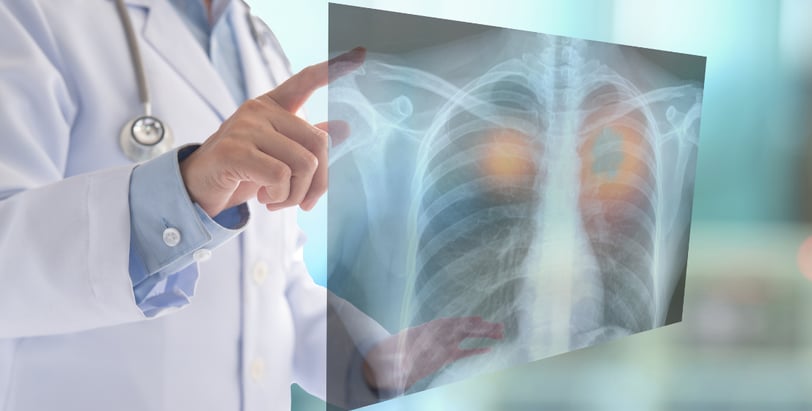X-Ray News: Advancements Shaping Modern Medicine
X-ray imaging has long been a vital tool in modern medicine, providing critical insights into the human body and aiding in the diagnosis of various conditions. With rapid advancements in technology and techniques, the landscape of X-ray imaging is evolving dramatically. In this post, we’ll explore some of the latest developments in X-ray technology and how they are reshaping patient care and outcomes.
4/7/20253 min read


The Transition to Digital X-Rays
The shift from traditional film X-rays to digital imaging has revolutionized radiology practices worldwide. This transition offers numerous advantages that significantly benefit both patients and healthcare providers:
Instant Image Availability: Digital X-rays allow radiologists to access images immediately through secure networks. This immediacy leads to quicker diagnoses, enabling healthcare providers to initiate treatment sooner, which is particularly important in emergency situations.
Lower Radiation Exposure: Modern digital X-ray systems are designed to minimize radiation doses. By utilizing advanced sensors and image processing techniques, these systems require less radiation than their film counterparts, making them safer for patients, especially vulnerable populations like children and pregnant women.
Enhanced Image Quality: Digital imaging provides greater detail and clarity, which aids radiologists in detecting even subtle abnormalities. Radiologists can manipulate images post-capture—adjusting contrast, brightness, and zoom levels—to improve diagnostic accuracy.
Streamlined Workflow: The digital format simplifies the storage and sharing of images. Radiologists can easily send images to other specialists for consultation, fostering collaborative care.
Innovations in Imaging Techniques
Recent advancements in imaging techniques are significantly improving diagnostic capabilities:
Computed Tomography (CT) and 3D Imaging: CT scans have evolved with enhanced imaging technologies that create detailed cross-sectional images of the body. 3D imaging allows radiologists to reconstruct complex anatomical structures, aiding in the diagnosis and planning of surgeries.
Fluoroscopy: This real-time imaging technique provides dynamic views of internal processes, such as swallowing and joint movement. By observing these functions live, healthcare providers gain valuable insights that static images cannot provide.
Digital Tomosynthesis: This innovative technique produces a series of images from various angles, allowing for clearer visualization of overlapping structures. It's especially beneficial in breast imaging, where traditional 2D images can sometimes lead to ambiguous results.
The Role of Artificial Intelligence
Artificial intelligence (AI) is making significant inroads in radiology, transforming how X-ray images are analyzed and interpreted:
Automated Image Analysis: AI algorithms are capable of processing and analyzing X-ray images rapidly and accurately. They can identify patterns and anomalies that might be missed by human observers, improving diagnostic accuracy for conditions like pneumonia, fractures, and even tumors.
Workflow Optimization: AI can enhance radiology workflows by prioritizing cases based on urgency. For instance, algorithms can flag critical cases, ensuring that radiologists address urgent issues first, which ultimately improves patient outcomes.
Training and Education: AI tools are being integrated into training programs for radiologists. By providing feedback on image interpretations, these tools can help enhance diagnostic skills and accuracy, ensuring that new radiologists are well-prepared for clinical practice.
Patient-Centric Advances
The latest innovations in X-ray technology are also focused on enhancing the patient experience:
Comfort and Accessibility: Newer X-ray machines are designed with patient comfort in mind. Features such as adjustable positioning and user-friendly interfaces help reduce anxiety for patients, particularly for children and those with disabilities.
Tele-radiology: The rise of tele-radiology allows radiologists to consult and evaluate images remotely. This capability ensures that patients, regardless of their geographical location, have access to expert opinions and care.
Educational Resources: Many healthcare facilities now offer educational materials that explain the purpose and process of X-ray examinations. By informing patients about what to expect, healthcare providers can foster a sense of confidence and involvement in their care.
Future Trends in X-Ray Technology
Looking ahead, several trends are likely to shape the future of X-ray technology:
Integration of Wearable Technology: As wearable health devices become more prevalent, there may be opportunities to integrate real-time data with imaging studies, providing a more comprehensive view of patient health.
Personalized Medicine: Advances in imaging will continue to contribute to personalized medicine, where treatment plans are tailored to individual patient needs based on detailed imaging and analysis.
Continuous AI Development: As AI continues to evolve, we can expect even more sophisticated algorithms capable of enhancing diagnostic accuracy and streamlining workflows further.
Reference Website Links:
Radiological Society of North America (RSNA)
American College of Radiology (ACR)
National Institutes of Health (NIH)
American Roentgen Ray Society (ARRS)
Health Imaging
Innovative
Contact Us
Service
xraybazar.com
© 2024. All rights reserved.
Address- Rajasthan, India
Gmail Id- xraybazaroffcial.com
Important Links
